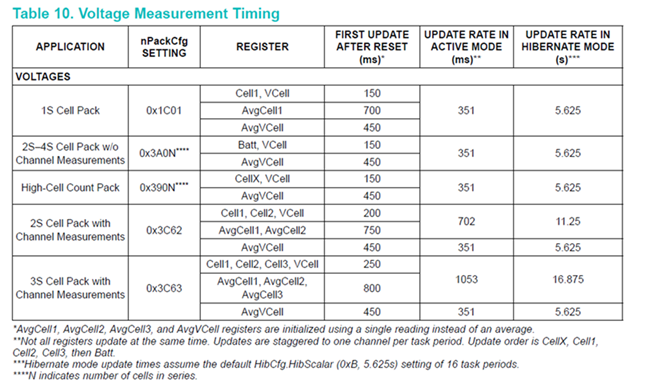Other Parts Discussed in Thread: BQ34Z100
Hi Team,
Is there a timing diagram that shows how long you need to wait until the internal register's are updated after a measurement is taken. I am looking for a similar table to the below but for the BQ34Z100-G1


